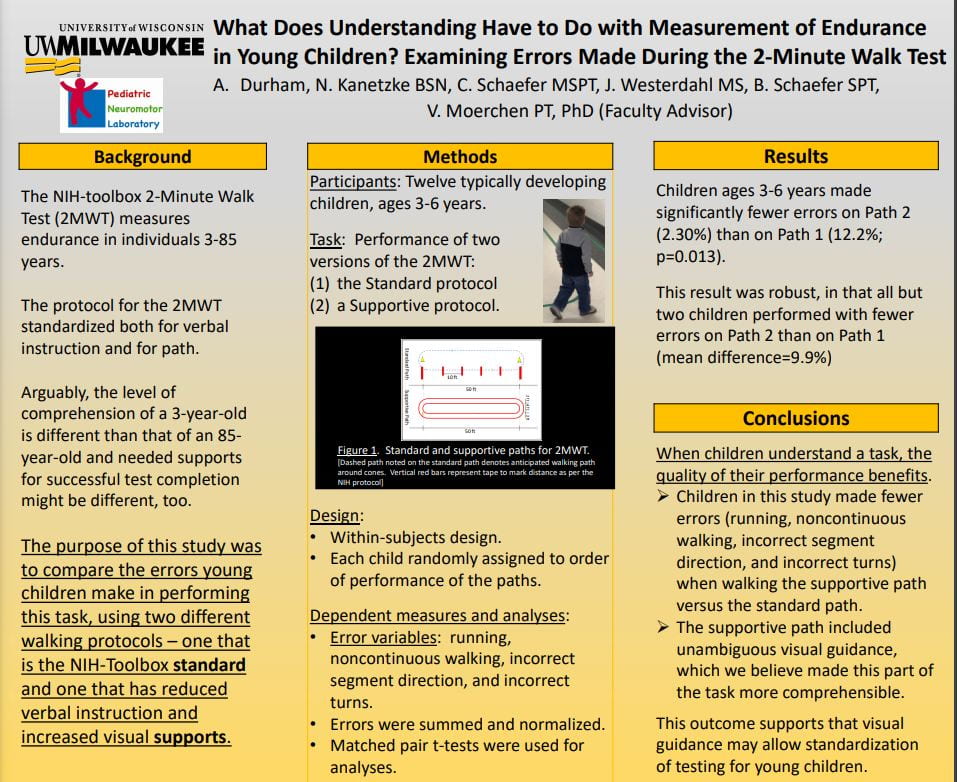Adane Durham, “What Does Understanding Have to Do with Measurement of Endurance During the 2MWT in Young Children?”
Mentor: Victoria Moerchen, Kinesiology
The 2-Minute Walk Test (2MWT) is a measure of endurance and is used across a wide age range from young children to adults. The level of comprehension of a 3-year-old is different than that of a 69-year-old. However, the instructions of the 2MWT are standardized. The purpose of this study was to compare the errors young children make in performing this task using two different walking paths. Twelve typically developing children between ages 3-6 performed a 2MWT on two different paths. Path 1 was designated by two cones 50 feet apart. Path 2 was designated by a taped 50-foot path resembling a track. For both paths, children were instructed to walk around the path for two minutes. Each child performed both paths and the order of performance of the paths was randomized. Motor errors were coded by lap from video data. Error variables included running, noncontinuous walking, incorrect segment direction, and incorrect turns. Error scores were then turned into a standardized score to allow for comparison across children. A T-test was used for between subject comparison of motor errors per path. Children ages 3-6 years made significantly fewer errors on Path 2 (2.30%) than on Path 1 (12.2%; p=0.013). This result was robust, in that all but two children performed with fewer errors on Path 2 than on Path 1 (mean difference=9.9%). Children perform with fewer errors (running, noncontinuous walking, incorrect segment direction, and incorrect turns) when walking a path that includes unambiguous visual guidance. These data are part of a larger study, but start to suggest that quality of performance as well as distance walked may be important in identifying a 2MWT path that optimizes the performance of young children.
Click the thumbnail below to open the full sized poster in a new tab.

Hello! My name is Adane Durham and I am a junior majoring in Kinesiology on a Pre-Physical Therapy track. I am apart of the Maternal and Child Health Pipeline Training Program that provides underrepresented students with research and leadership opportunities.This semester I was able to work with Dr. Moerchen in the Pediatric Neuromotor Laboratory. This project was a great opportunity to be introduced to testing measures used in my future career field and pediatrics as my goal is to be a pediatric physical therapist.
Adane,
I appreciated your poster very much. The information is clearly presented, and the poster is attractive to the eye. Most important to me was that you addressed what the findings mean and why they matter. Well done! Good luck with your future work!
Cheers to health,
Dr. Erin Parcell
Adane,
I also appreciate how clearly your experiment is written up. Well done!
As someone outside the discipline, I found myself wondering about the logic of the baseline test, but each question I asked I now see that you have answered. The only thing I still don’t have a clear idea of is what the measure of ‘endurance’ is, now that you have a better method for executing the test, but that seems irrelevant to the experiment you have conducted.
Good luck to you in your future studies!
Jim Wasley (Architecture)